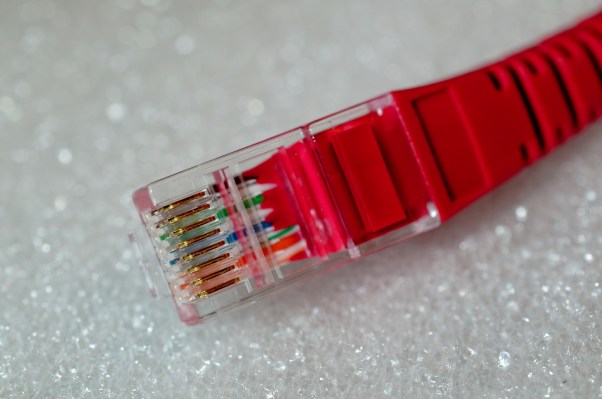Wi-Fi, DSRC, Bluetooth, NFC — there are so many ways to connect without cables that ethernet seems retro, like a flip phone. But ethernet is staging a comeback in our cars. Manufacturers like Hyundai and Land Rover are using this old-school technology to connect the sensors that allow for advanced driving assistance systems (ADAS) and baby steps toward self-driving cars.
“As autonomous driving and safety features have come about, there is a need for higher capacity networking within the car,” said Ali Angha of Spirent in a phone interview. “It’s a proven technology that’s been around for a long time.”
For years, sensors have communicated with the car’s main computer using point-to-point connections. “At one end is a device, and there’s another device on the other end, and they’re directly communicating,” Angha said. But when there are so many sensors, including cameras, radar and LIDAR, that is a lot of point-to-point cabling. Angha said that the cabling in a modern vehicle is the third-heaviest component of a car, after the engine and transmission. “It’s a lot of copper,” he said.
Enter the ethernet! It uses switches that allow connections to any number of devices, reducing the amount of cabling required and thus the overall weight of the car. It’s also more scalable, allowing devices and sensors to connect at different speeds. Ethernet also has the benefit of components being available off the shelf, so automakers don’t have to design everything from scratch.
Moving away from point-to-point communications within a vehicle does create security vulnerabilities, Angha admitted: “You have a lot of points of connection into the system,” including over-the-air updates and Wi-Fi hotspots. But that’s where segmenting comes in. Groups can be created within an ethernet system that communicate with each other but are isolated from other groups. The idea is to reduce the likelihood that outside connections will create vulnerabilities for mission-critical systems.
“Within the car, in the very long term, everything is going to be ethernet,” Angha predicted. It will be able to handle uncompressed video, which becomes important in autonomous driving, where computations are based on image recognition. “If someone runs into the road, you cannot afford the time to compress and uncompress a video” in order to avoid hitting them, Angha said.
But it’ll be a while before ethernet systems are used throughout cars. There are plenty of sensors that don’t require a lot of bandwidth, like the one that knows if your window is up or down. Angha noted that it’s more cost-effective for OEMs to not change those kinds of connections. But over time, ethernet could end up being cheaper in terms of both manufacturing and maintenance, he believes. “The security of connectivity will become a major concern, and ethernet solves that problem.”
